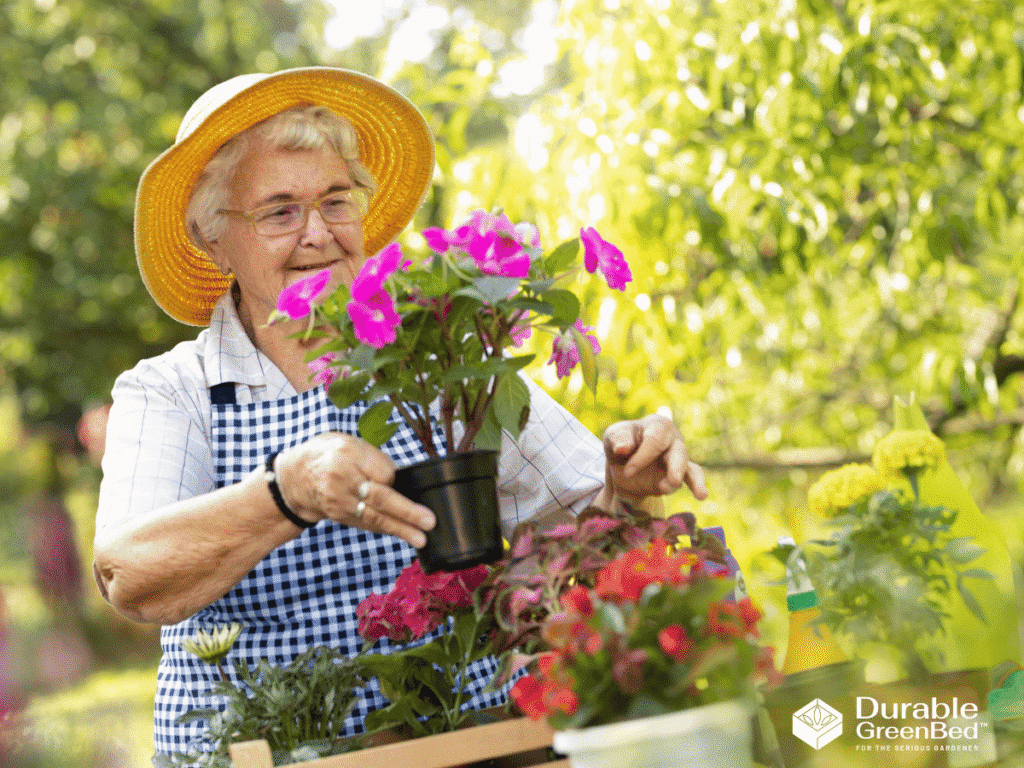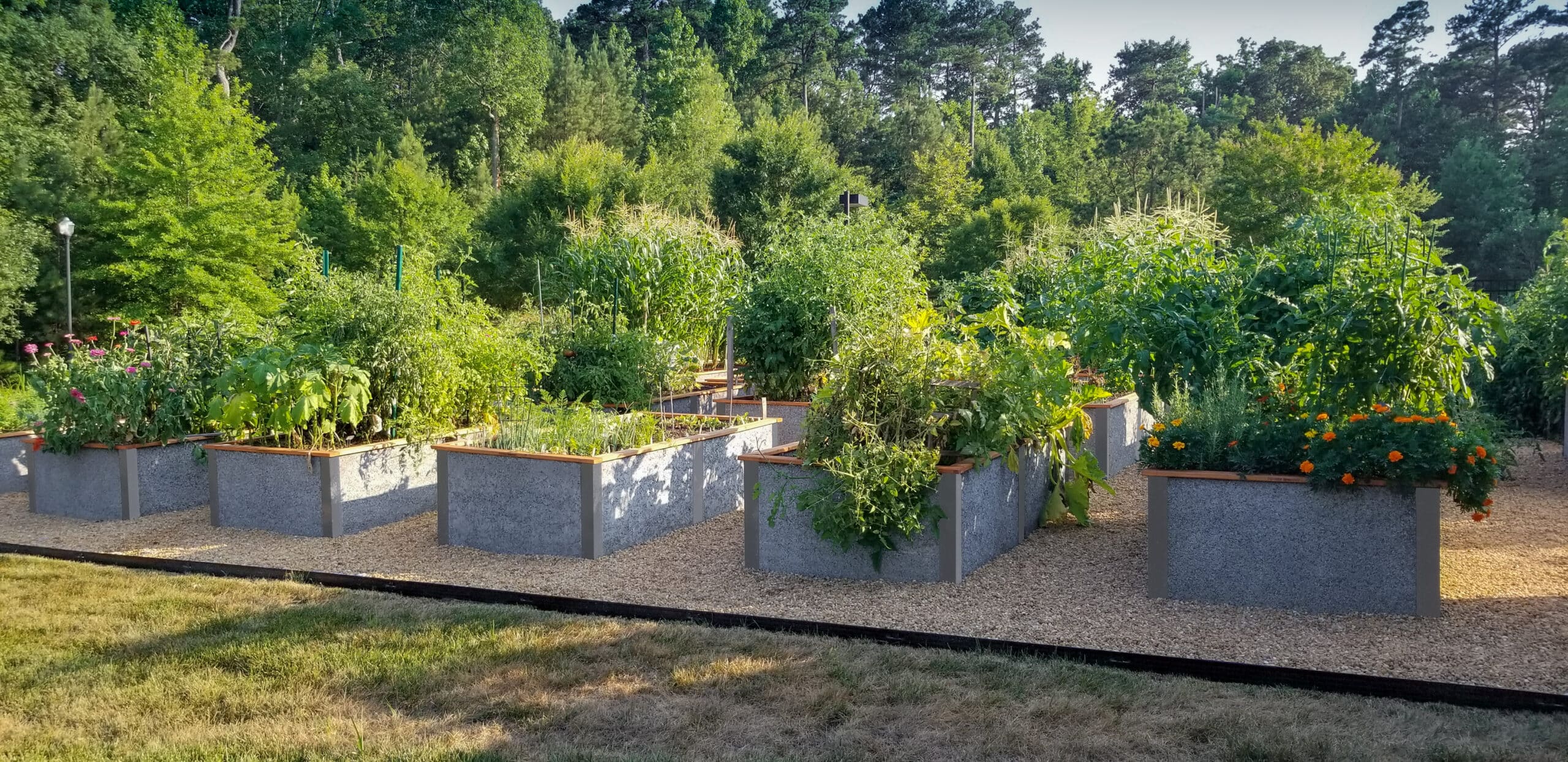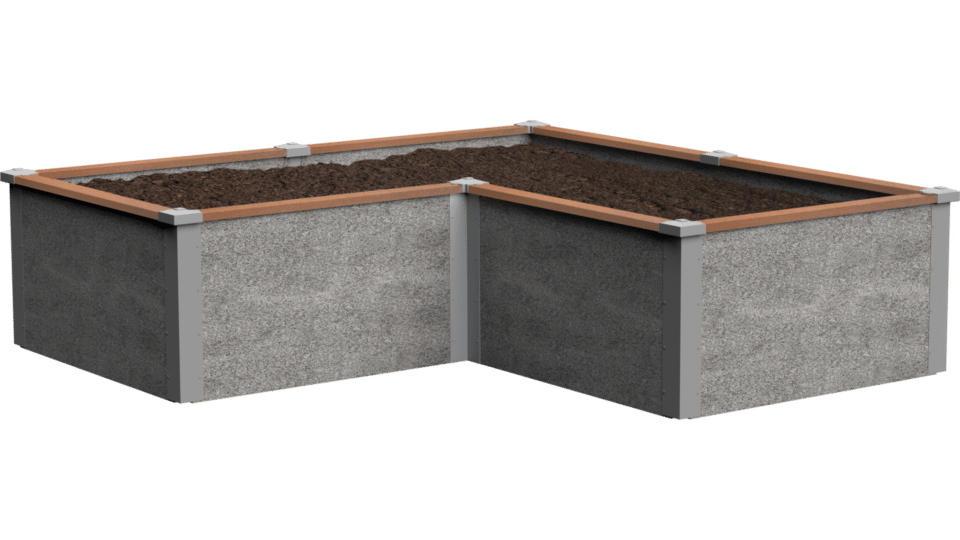
People who buy our Durable GreenBed raised garden bed kits often ask what type of soil they should use to fill their new beds. Here’s the advice we typically share. Once you’ve considered that, read on for some bonus tips we share with customers on how to decrease the amount of soil you need and keep your garden soil healthy.
What type of soil works best for raised beds?
In situ soil
The best and greenest soil for your raised beds is soil that comes from your property. There’s no need to transport soil onsite (or in situ, in Latin) in a car or plastic bag. And if you’re already gardening organically, you know your soil is free from pesticides, herbicides and other contaminants.
However, we realize this isn’t possible for everyone. People often purchase raised bed kits because their soil is so poor they can’t grow in it. If you’re concerned about using your own soil, there are a few things you can do to determine whether it will work in your raised beds.
What Soil Type do you have?
The first is to determine what type of soil you have. There are two ways you can research your soil type at home. One option is to wet down the soil, let it dry slightly, then try to form it into a ball (as described in this video). Clay soil will easily take on a round form; sandy soil will crumble in your hand. If you get a result somewhere in between, you have loam.
The other thing to consider is testing your soil for minerals and nutrients. The most accurate results will come from a soil testing company. If you decide to get your soil tested by a professional, this video from the University of Maryland Home & Garden Information Center explains the best way to collect a sample.
If you don’t want to shell out the money for a professional soil tests (they can be expensive), buy a home testing kit. They aren’t nearly as accurate, and will only provide information about a limited number of soil nutrients. But they can be a good place to start if you suspect your soil is nutrient-deficient. Look for soil test kits at hardware stores.
Your soil plus compost 
If your soil is decent but could use a boost, add compost. You can mix soil with up to 50 percent compost and get great results from your raised beds.
Keep in mind that compost isn’t fertilizer. You’ll still need to fertilize flowers, vegetables and fruits as needed throughout the year. But compost is always a good addition to your raised garden beds. Plan to invest in some of it no matter where your soil comes from (more on that below).
Purchased soil
Another soil option for raised garden beds is purchased soil. The best place to get it is a reputable garden center, landscape supply store or hardware store. Sometimes people will post fill dirt to Craig’s List or other sites. There’s no good way of determining whether this dirt is “clean” or not, so buying it can be a risk, especially if you’re an organic gardener.
A better option might be to reach out to people you know and see if they have fill dirt they’re willing to share with you. The added bonus is that the price tag for your soil may go from high to free.
How to decrease the amount of soil you need for raised beds
Another question we get is how much soil it takes to fill raised garden beds. The best way to determine that is to use a soil calculator like this one from Gardener’s Supply Company. But here’s a great suggestion to decrease the amount of dirt you need to dig up or buy for your raised beds.
Put straw bales into the base of each garden bed after it’s assembled. Add a high-nitrogen fertilizer to the bales and soak them with water. That will heat them up and super-charge the composting process that will naturally occur. Leave the bales for three weeks, then add soil to fill the bed. Over time the straw will break down and contribute to the fertility of your raised garden bed.
Maintaining soil health in raised beds 
Putting healthy, high-quality soil in a raised garden bed is one thing. Keeping that soil healthy is another. Here are some tips for maintaining the health of the soil in your raised garden beds.
Grow a cover crop
Fava beans, crimson clover, peas and similar types of cover crops (sometimes called “green manure”) fix nitrogen in the soil and draw nutrients up where plant roots can access them. The cover crop can also be folded down into the soil prior to planting, which provides rich organic matter. Cover crops are planted in the fall and removed in the spring. The Cornell University Extension Service has a great guide to using cover crops.
Cover your raised bed during the winter
Another benefit of cover crops is that they keep rain from falling on soil and compacting it. If you decide not to use a cover crop, it’s worth covering beds with something else to keep the rain off. Leaves, straw, cloches or plastic can all work.
Add compost
Compost adds to soil porosity, provides a gradual release of nutrients, brings beneficial microorganisms and helps keep soil pH neutral. Add it once a year to increase soil quality. One notable difference between compost and fertilizer is that compost has a cumulative effect. Compost continually “builds” soil health, which ensures your raised garden beds will be a great place to grow for years to come.
There's Nothing Like Durable GreenBeds
It's the Walls!™
- Breathable
- Well Draining
- Higher Yields
- Prevents Slugs and Pests
- Non-Toxic
- 20-25 Year Lifespan
Shop Durable GreenBed Kits
-
Rectangular Raised Garden Bed Kit
$471.00 – $2,085.00 Select options This product has multiple variants. The options may be chosen on the product page -
L-Shaped Raised Garden Bed Kit
$786.00 – $1,305.00 Select options This product has multiple variants. The options may be chosen on the product page -
U-Shaped Raised Garden Bed Kit
$1,199.00 – $2,446.00 Select options This product has multiple variants. The options may be chosen on the product page
Shop Durable GreenBed Raised Garden Bed kits
-
Rectangular Raised Garden Bed Kit
$471.00 – $2,085.00 Select options This product has multiple variants. The options may be chosen on the product page -
L-Shaped Raised Garden Bed Kit
$786.00 – $1,305.00 Select options This product has multiple variants. The options may be chosen on the product page -
4’x8’ Stepped Raised Garden Bed Kit
$865.00 – $1,073.00 Select options This product has multiple variants. The options may be chosen on the product page -
U-Shaped Raised Garden Bed Kit
$1,199.00 – $2,446.00 Select options This product has multiple variants. The options may be chosen on the product page











